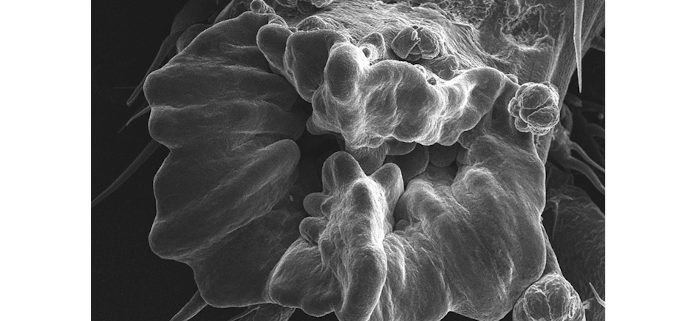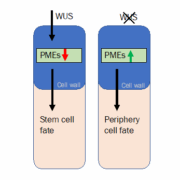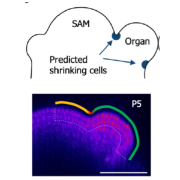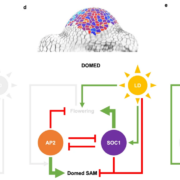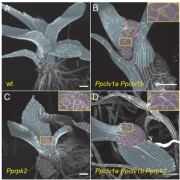The straw that breaks the camel’s back
By Wenping Wang, Chong Hu, Xiaoping Gou and Jing Yi
Ministry of Education Key Laboratory of Cell Activities and Stress Adaptations, School of Life Sciences, Lanzhou University, Lanzhou 730000, China.
Background: Throughout their lifespans, plants continually initiate new organs. This process relies on the shoot apical meristem (SAM) and root apical meristem (RAM). SAM and RAM homeostasis is tightly regulated by CLAVATA3 (CLV3)/EMBRYO SURROUNDING REGION (ESR)-related (CLE) peptide signaling. However, we know relatively little about the intracellular signaling components after CLV3 is perceived by the CLV1–CLV3 INSENSITIVE KINASE (CIK) receptor complex and CLE25/26/45 are sensed by the BARELY ANY MERISTEM (BAM)–CIK receptor complex to modulate SAM and RAM homeostasis. Receptor-like cytoplasmic kinases (RLCKs) are the immediate signaling components acting downstream of the receptor complexes to transduce the corresponding ligand signals.
Question: We wondered whether CLV1 and BAM1/3 also need RLCKs to transduce the CLV3 and CLE25/26/45 signals in the SAM and RAM, respectively. We examined this hypothesis by disrupting the functions of a clade of RLCK genes.
Findings: Loss-of-function of PBS1-LIKE34/35/36 (PBL34/35/36) resulted in enlarged SAM, more stem cells, and extra flower organs in the mutant plants. Physiological assays showed that exogenous application of CLV3 or CLE25/26/45 terminated the SAM or consumed the RAM of the wild-type plants but not the pbl34 pbl35 pbl36 mutants. In addition, loss-of-function of PBL34/35/36 greatly enhanced the SAM defects of clv2 and rpk2 but not clv1. Further biochemical assays revealed that PBL34/35/36 interacted with CLV1, BAM1/3, and CIKs, and were phosphorylated by CLV1 and BAM1. All these results suggested that PBL34/35/36 act downstream of CLV1 and BAM1/3 to mediate the CLV3 and CLE25/26/45 signals in maintaining SAM and RAM homeostasis, respectively.
Next steps: The pbl34 pbl35 pbl36 mutant exhibits weaker SAM defects than clv1. Generating higher-order pbl mutants will be necessary to elucidate whether PBL34/35/36 function redundantly with their homologs or CLV1 employs distinct downstream effectors. Moreover, the downstream components of CLV signaling that directly repress WUSCHEL (WUS) expression are unknown.
Wenping Wang, Chong Hu, Xiaonan Li, Yafen Zhu, Liang Tao, Yanwei Cui, Dingqian Deng, Xiaoxuan Fan, Hong Zhang, Jia Li, Xiaoping Gou, Jing Yi. (2022). Receptor-like cytoplasmic kinases PBL34/35/36 are required for CLE peptide-mediated signaling to maintain SAM and RAM homeostasis in Arabidopsis. https://doi.org/10.1093/plcell/koab315


